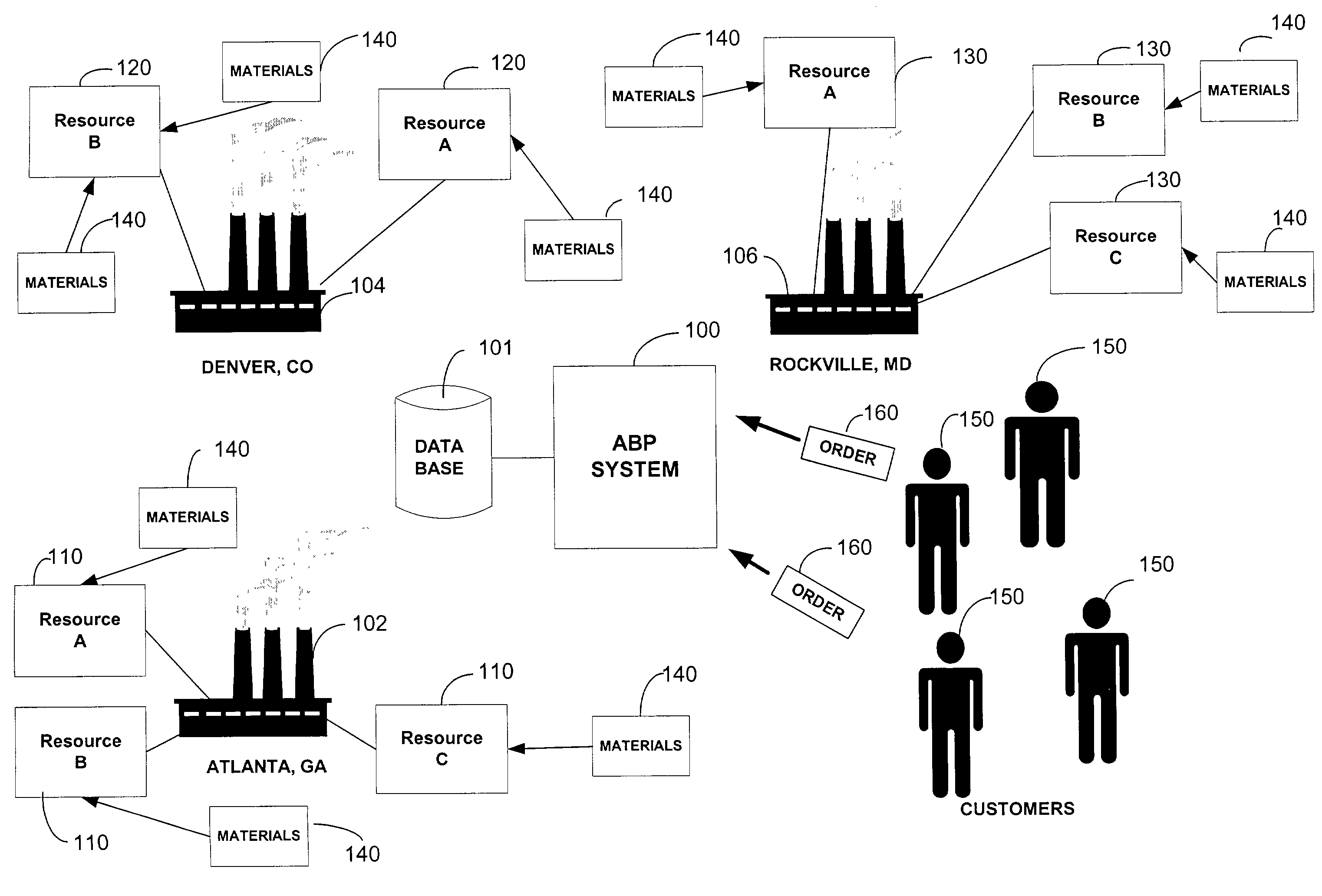System, method, and computer program for replenishment by manufacture with attribute based planning
a technology of attribute-based planning and system, applied in the field of attribute-based planning system, can solve the problems of increasing the complexity of planning, and increasing the difficulty of planning the use of resources in the supply chain network
- Summary
- Abstract
- Description
- Claims
- Application Information
AI Technical Summary
Benefits of technology
Problems solved by technology
Method used
Image
Examples
case 2
[0208]The following is a brief summary of three basic cases followed by a more detailed description of the various scenarios. The three basic cases are when the replenishment of the full quantity is on time, when replenishment of the full quantity is late, and when replenishment is infeasible.[0209]Case1: The replenishment is marked feasible and the soonest available date is recorded. No further processing needs to be done.[0210] The replenishment is marked feasible, the amount available on the need date is recorded and the soonest available date is recorded. The user can set a flag that allows the system to look for one or more substitutes to improve the timeliness.[0211]Case 3: The replenishment is marked infeasible and the amounts available on the need date and the need date+maximum lateness are recorded. In this case, the ABP system 100 will try to substitute as in case 2 to try to make up the difference at the need date+maximum lateness. The user may set a flag that allows the ...
case 1
[0323]To create an auxiliary constraint, specified entities may be “tied” together. The three entities are a SAD group, a resource or a resource group and a calendar of maximums. To illustrate this concept, the following example is provided. Suppose that no more than 50 cars a day can be produced and each week is defined by seven workdays at the Atlanta factory. If we decided to model the primary capacity constraint at the daily level, it would have a maximum of 50 cars per day. If we decided to model the primary capacity constraint at the weekly level, it would have 50*7=350 cars per week. Suppose the number of red cars with sunroof manufactured at Atlanta should not exceed 50 cars per week. Next, the user would create an auxiliary constraint, a SAD Groups that specified (Color=Red and Sunroof=YES), and specify the maximum on the constraint to be 50 cars per week. An auxiliary constraint can be specific to a resource, specific to a resource group or global. If the constraint is spe...
PUM
 Login to View More
Login to View More Abstract
Description
Claims
Application Information
 Login to View More
Login to View More - R&D
- Intellectual Property
- Life Sciences
- Materials
- Tech Scout
- Unparalleled Data Quality
- Higher Quality Content
- 60% Fewer Hallucinations
Browse by: Latest US Patents, China's latest patents, Technical Efficacy Thesaurus, Application Domain, Technology Topic, Popular Technical Reports.
© 2025 PatSnap. All rights reserved.Legal|Privacy policy|Modern Slavery Act Transparency Statement|Sitemap|About US| Contact US: help@patsnap.com



